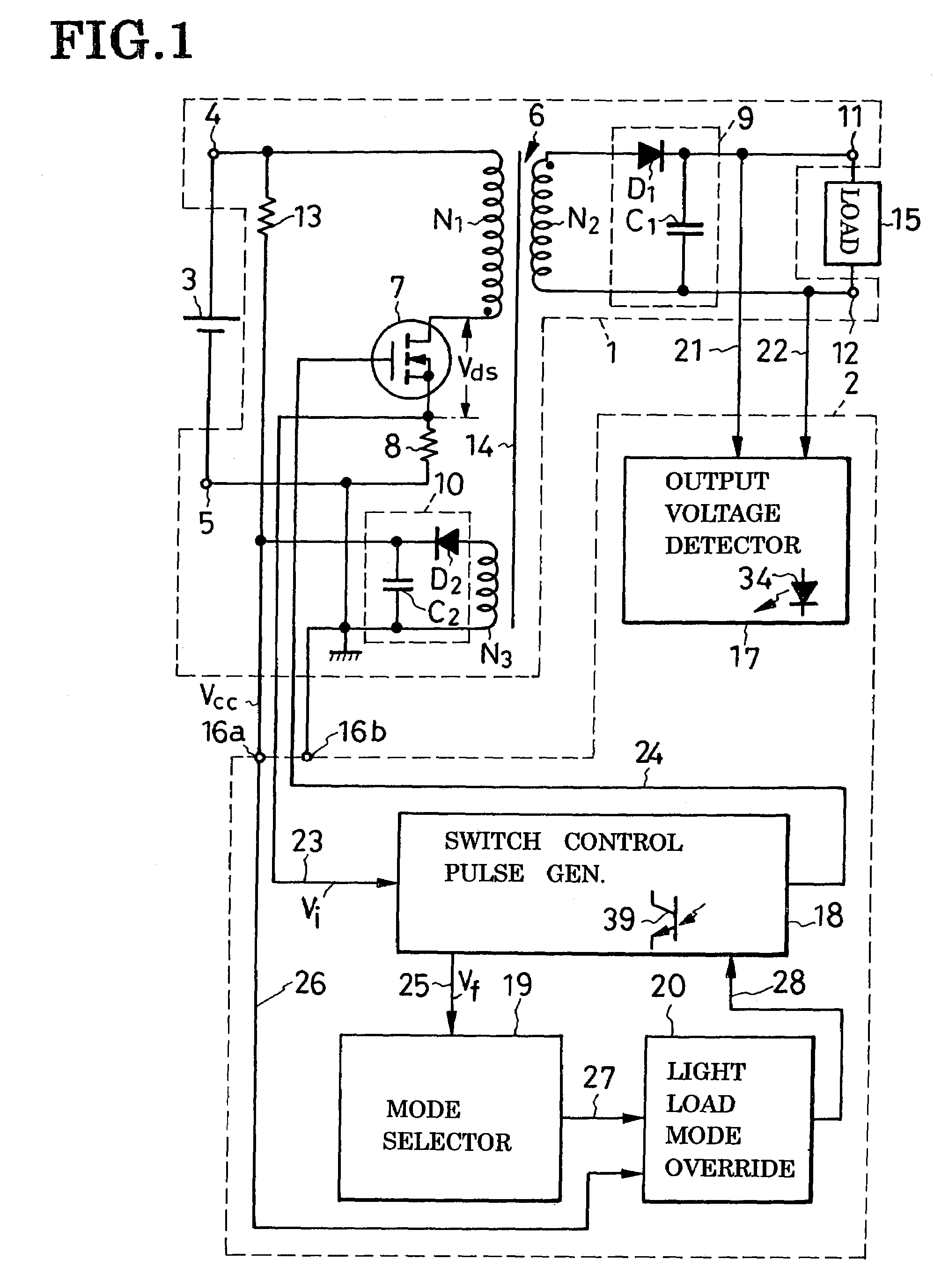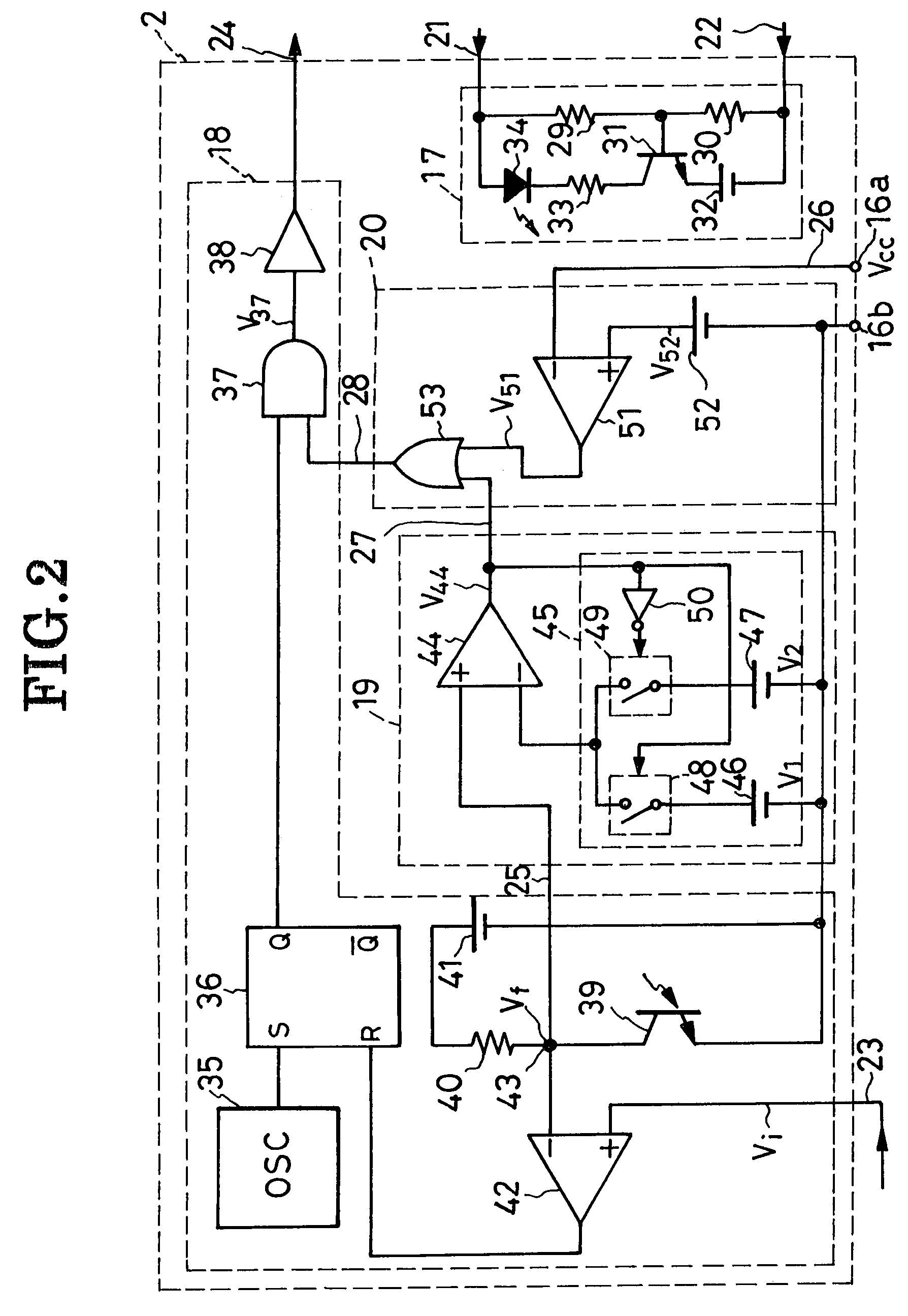Dc-to-dc converter
a converter and dc technology, applied in the direction of dc-dc conversion, power conversion systems, instruments, etc., can solve the problems of increasing voltage voltages across the smoothing capacitor further lessen, and difficulties left unresolved
- Summary
- Abstract
- Description
- Claims
- Application Information
AI Technical Summary
Benefits of technology
Problems solved by technology
Method used
Image
Examples
embodiment
of FIG. 6
[0079]The dc-to-dc converter of FIG. 6 includes a modified dc-to-dc converter circuit 1a and the switch control circuit 2 of the same construction as its FIG. 1 counterpart. The modified dc-to-dc converter circuit 1a includes a transformer 6a which has no secondary winding; instead, has the first rectifying and smoothing circuit 9 is connected in parallel with the switch 7. This embodiment is identical with that of FIGS. 1–5 in all the other details of construction.
[0080]Energy is stored during each conducting period of the switch 7 on the inductive transformer primary N1 as then the rectifying diode D1 of the first rectifying and smoothing circuit 9 is reverse biased. The thus-stored energy is released from the transformer primary N1 during the subsequent nonconducting period of the switch 7 as then the rectifying diode D1 is forward biased. The smoothing capacitor C1 of the first rectifying and smoothing circuit 9 is therefore charged by the resultant of the voltage acros...
PUM
 Login to View More
Login to View More Abstract
Description
Claims
Application Information
 Login to View More
Login to View More - R&D
- Intellectual Property
- Life Sciences
- Materials
- Tech Scout
- Unparalleled Data Quality
- Higher Quality Content
- 60% Fewer Hallucinations
Browse by: Latest US Patents, China's latest patents, Technical Efficacy Thesaurus, Application Domain, Technology Topic, Popular Technical Reports.
© 2025 PatSnap. All rights reserved.Legal|Privacy policy|Modern Slavery Act Transparency Statement|Sitemap|About US| Contact US: help@patsnap.com



